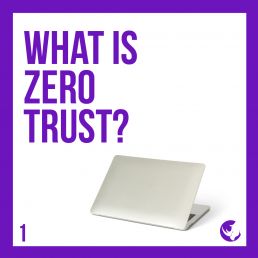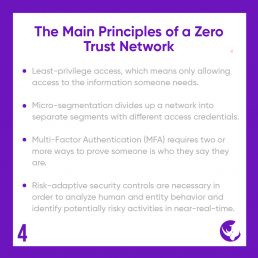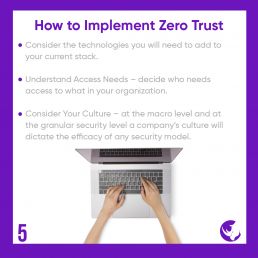What is Zero Trust?
Zero Trust operates under the guiding principle “never trust, always verify.” All users, platform providers, and network traffic are treated as potential threats, so additional measures are needed to mitigate risk.
It’s not, however, a set of specific tools or a type of security technology. It is a cybersecurity strategy—a mindset that serves as the foundation of modern security. Under Zero-Trust policies, you take network breach as a given and assume that all activity is malicious. Zero Trust asks: how do I best protect my assets if I can’t trust the network itself?
There are many definitions, sometimes conflicting, of Zero Trust. Put simply, Zero-Trust security is exactly what it sounds like: it’s a policy of maintaining zero trusts toward all users, providers, and network traffic—even those inside the network.
Simply put, Zero Trust means that only the content creator and authorized recipient have access to the sensitive content.
What is Zero Trust – Trust No One
Zero Trust flips traditional cybersecurity on its head by assuming that no one can be trusted. While that may sound a bit draconian, it’s actually easier for everyone when done right.
Not that it’s easy. To make Zero Trust work, adopters need to make an organization-wide commitment. They need to catalog all of their IT and data assets and assign access rights based upon roles. In the process, they need to lock down some common vulnerabilities. For example, web servers should never be permitted to talk directly to other web servers and should only communicate with application servers through specified ports.
Data also needs to be classified. Some information, such as the company team’s softball schedule, may require no protection at all. Trade secrets and other proprietary data need multiple levels of authentication by a restricted class of users.
Networks need to be segmented to prohibit lateral movement, which has long been the culprit in big data breaches. Workloads have to be isolated from each other and protected as they move across virtual machines and cloud servers. Managing such an environment has been a daunting task until recently, but the landscape is changing.
Why Rhyno?
Working as an extension of your team, Rhyno delivers advanced solutions for Managed Detection and Response and security assessment. By leveraging our understanding of the tactics attackers use to breach defenses, in-depth knowledge of the latest security tools, and a commitment to innovation, we ensure our clients are armed to continuously prevent, detect and respond to cyber threats.
We discover and safely exploit vulnerabilities before hackers do
The primary goal of a pen test is to identify weak spots in an organization’s security posture, as well as measure the compliance of its security policy, test the staff’s awareness of security issues and determine whether — and how — the organization would be subject to security disasters.
A penetration test can also highlight weaknesses in a company’s security policies. For instance, although a security policy focuses on preventing and detecting an attack on an enterprise’s systems, that policy may not include a process to expel a hacker.




